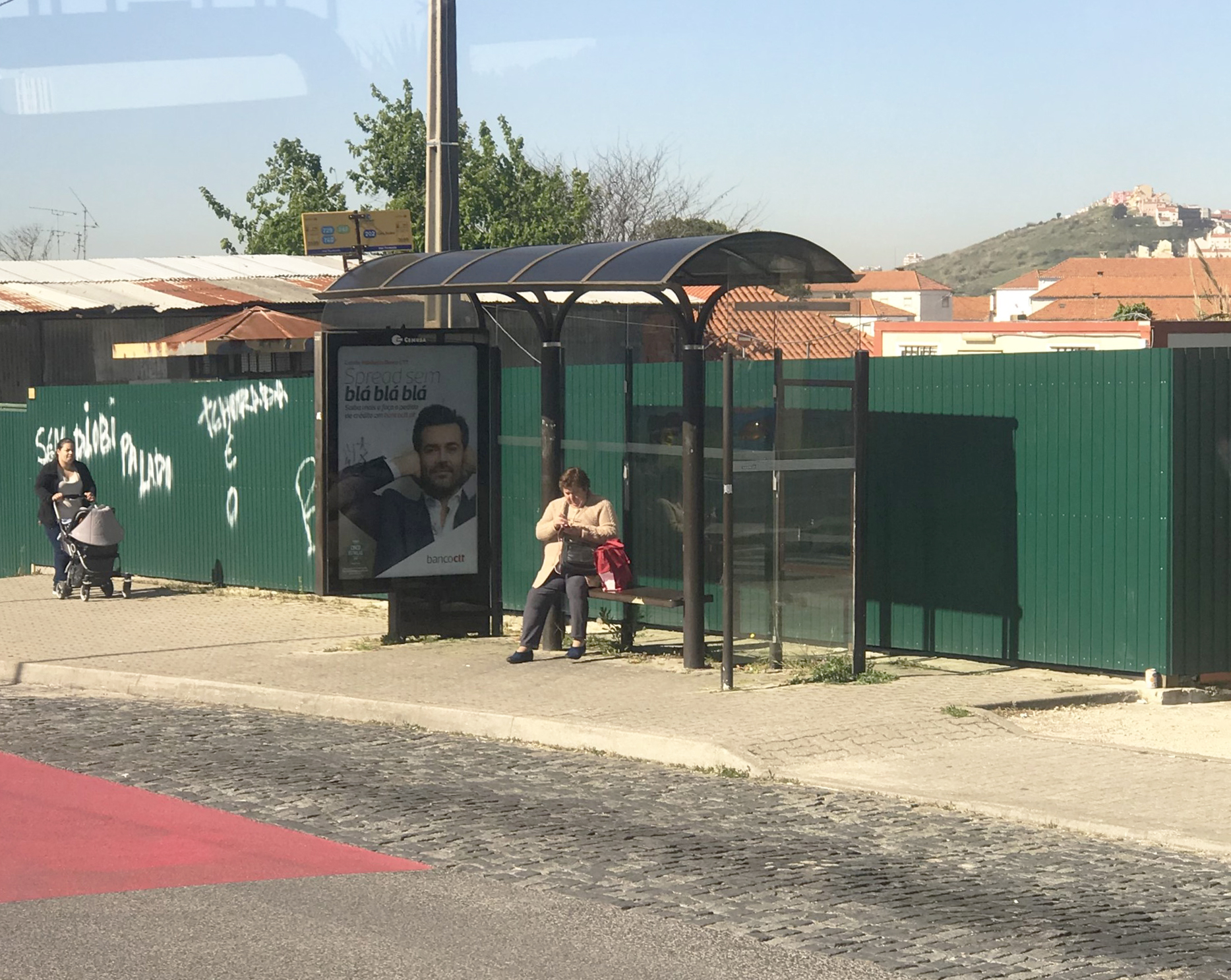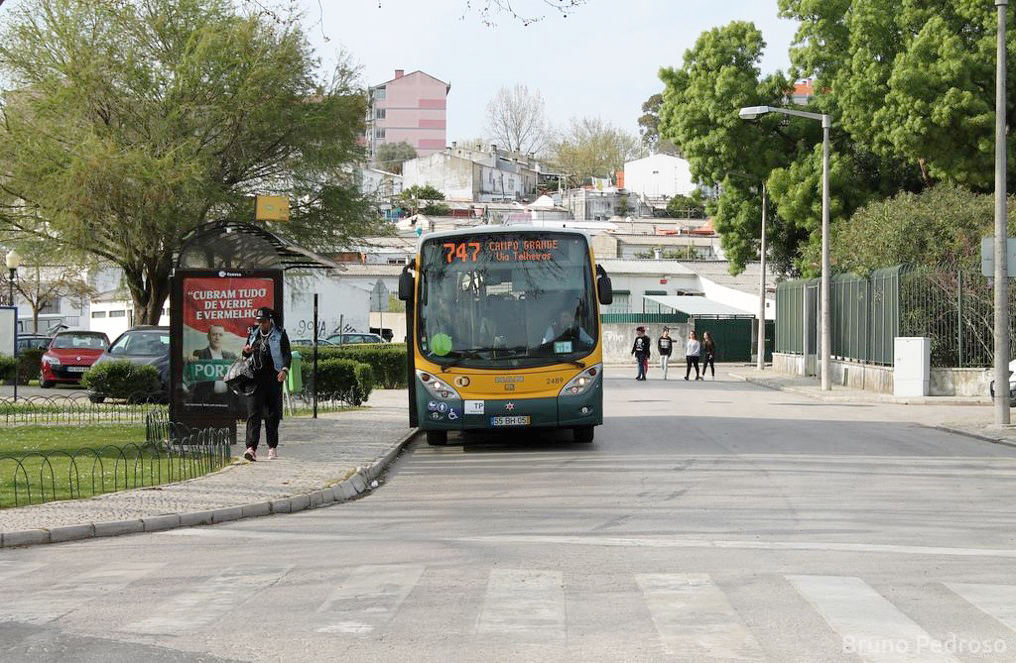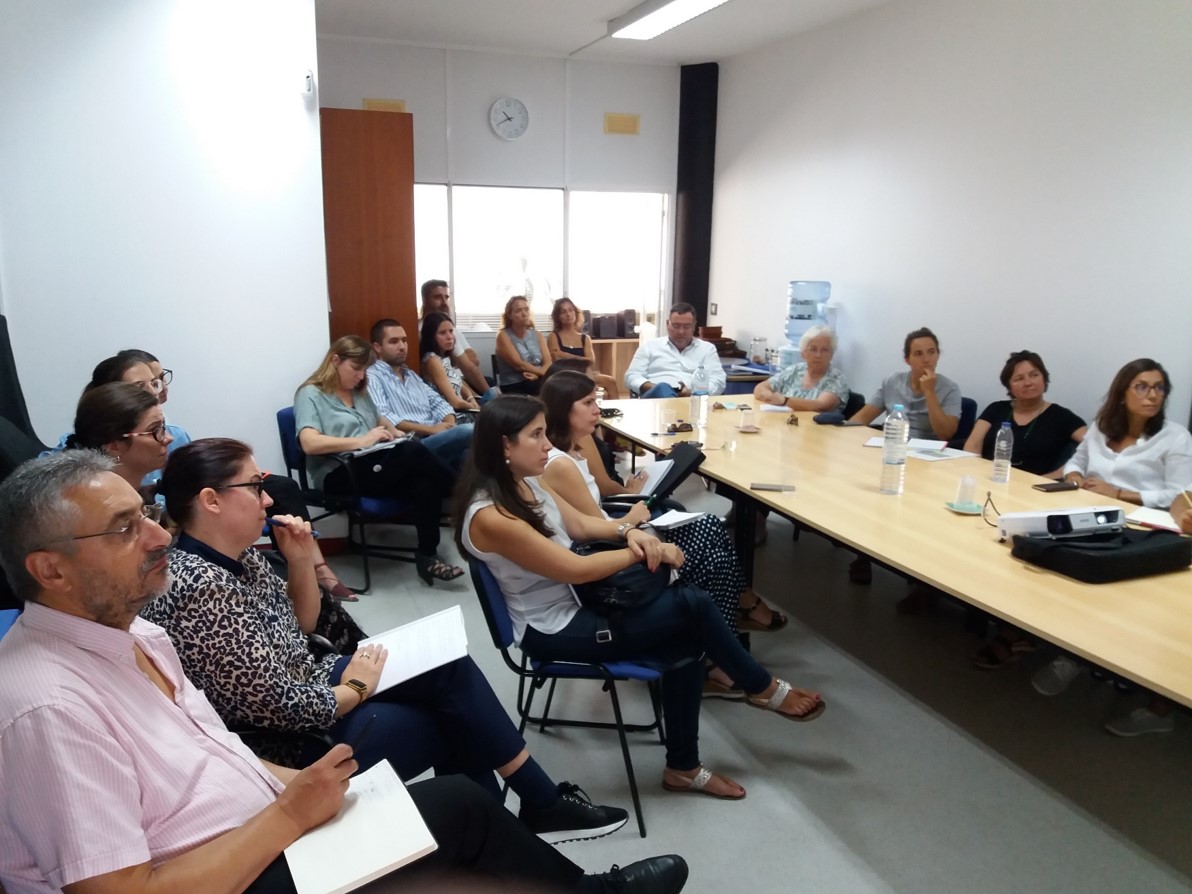 Bairro Padre Cruz - © Rita Jacinto
Bairro Padre Cruz - © Rita Jacinto Bairro Padre Cruz - © Rita Jacinto
Bairro Padre Cruz - © Rita Jacinto Bairro Padre Cruz - © Rita Jacinto
Bairro Padre Cruz - © Rita Jacinto Bairro Padre Cruz - © Rita Jacinto
Bairro Padre Cruz - © Rita Jacinto Bairro Padre Cruz - © Rita Jacinto
Bairro Padre Cruz - © Rita Jacinto- Bairro Padre Cruz - © Rita Jacinto
City
Lisbon
Main actors
Local Government, City Government
Project area
Neighborhood or district
Duration
Ongoing since 2017
How better urban planning can improve gender equality.
Bairro Padre Cruz is a low income, social housing neighbourhood, at the edge of the city borders. It is surrounded by large facilities, including a military base, a cemetery, several schools and a large metro maintenance shop, which has severed the neighbourhood from any easy walkable connections to the closest urban area. Many women in this neighbourhood are shift workers or have jobs requiring commuting late at night or in the early hours of the morning and require access to the bus service at these times. Additionally, Bairro Padre Cruz also has limited services and shopping options, forcing many residents to go to nearby neighbourhoods for their necessary daily errands and weekly grocery shopping.
The initiative to launch this pilot project resulted from two years of research-action work by the Lisbon City Council, on the ‘Safety and Perception of Safety of Women in Public Spaces and Access to Public Transport’. The Division for Pedestrian Accessibility commenced work on this topic in 2017, and during the following two years conducted several studies, including a large survey, focus groups and created a working group dedicated to this issue. The team looked for an area to conduct field research and pilot infrastructural changes at the local level. Bairro Padre Cruz was selected as the area for the pilot project and the local borough supported the initiative.
This pilot project took place with two main objectives:
- To understand the safety and accessibility challenges for women and girls in using public space and public transport.
- To implement infrastructural changes in the Bairro Padre Cruz neighbourhood and improve safety, mobility and access opportunities for women and girls.
Aiming to address a wide range of issues that women and girls face when accessing public space or public transport, the methodology used was defined by seven key thematic dimensions:
- Accessibility
- Convenience
- Sexual Harassment
- Costs
- Road Safety
- Social Dimensions
- Personal Safety
After drafting the methodology, team members met with representatives from local organisations, to present the project, get feedback and ask for suggestions on how to better involve participants.
Meetings were held with the following organisations:
- Residents’ association
- Municipality services who operate in the area
- School EB 2-3 Bairro Padre Cruz
- Local Community Municipal Police
- Care and residential facility for older people
- Local youth association (Associação Futebol de Rua)
- Local Borough of Carnide
The data collection was based on information from different sources. Desk research was combined with field research. Through desk-based research geo-referenced data was gathered on local services and facilities, bus stops, distances to other mobility services outside the neighbourhood, road safety, as well as socio-demographic data.
For the field work, and to understand issues faced by girls and women with different mobility patterns and challenges, we had participants from four age groups and occupations:
- Girls from 13 to 17 years old;
- Young women from 18 to 22 years old;
- Women working outside of the neighbourhood, from 22 to 64 years old;
- Older women – 65 years old and older.
Participation from women and girls took place in different ways:
- A survey at a local school, with 102 girls;
- Focus groups with participatory mapping of the main issues women faced in the area;
- Conducting several focus groups, with groups of 4 to 7 participants, in total 50 girls and women participated;
- Short interviews, face-to-face, at neighbourhood bus stops, with 49 women.
The support of local stakeholders was fundamental to secure the participation of women and girls and for the success of the project. It was much easier to introduce the project to participants, gain their trust and logistically it made a big difference to be able to use the school facilities or the residents’ association meeting room.
In September 2019, after the data collection was complete, all partners in the project were invited to a session where the data was presented, feedback was given and questions were answered. After much discussion about the results of the data and after a second meeting with partners in January 2021, the team prioritised the issues and locations to tackle, with the support of all stakeholders involved.
Two priority areas were selected for infrastructural change:
- Rua Rio Cávado and the bus terminal at the nearby church.
- Rua Professor Arsénio Nunes, and the intersection with Estrada Militar.
In these two areas the focus was on:
- The relocation of the neighbourhood bus terminal from a more isolated area to be near the ‘central street’ (Rua Rio Cávado) to increase visibility, convenience and promote safety
- Creating new bus stops closer to EB 2,3 School
- Increasing pedestrian space
- Removing pavement obstacles and pavement parking
- Introducing traffic calming measures
- Introducing accessibility features such as levelled pedestrian crossings and seating area
For the public space and street re-designs, the team worked with ‘Trabalhar com os 99% Cooperative’, and the final project was concluded in November 2021.
The team also worked intensively with CARRIS, as the new bus terminal, the relocation of bus stops and the creation of new bus stops entailed the re-routing of bus lines and infrastructural adaptations.
With this project Lisbon was a follower-city on the SUNRISE CIVITAS H2020 Project. SUNRISE provided us with technical support, training resources and proved to be a useful platform to engage with other cities working on the co-creation of sustainable urban mobility at local level.
The lead agency for the pilot project is the Division for Pedestrian Accessibility at the Lisbon City Council.
The final designs and plans are ready. Approval by the City Council for the budget is pending and once received the public tender phase to find a contactor will commence.
Project stakeholders and partners:
- CARRIS (municipal bus company)
- Municipal Mobility Department
- Residents’ Association of Bairro Padre Cruz
- Municipality services who operate in the area
- School EB 2,3 Bairro Padre Cruz
- Local Community Municipal Police
- Care facility and residential facility for older people
- Local Youth Association (Associação Futebol de Rua)
- Local Borough of Carnide
This pilot project is still on-going. However, having already put women’s and girl’s safety in public spaces and access to public transport on the city agenda has been a major step forward to a more inclusive urban strategy.
In addition, having had the cooperation of local partners and CARRIS on this pilot has been a significant breakthrough in putting women’s and girl’s needs at the forefront of transport operation plans and public space re-design.
One of the challenges faced relates to the discomfort in talking about what makes women and girls afraid and uncomfortable in public space and on public transport. This challenge was faced by participants, project partners and the project team. Carrying out infrastructural change that considers the needs and safety of women and girls in public spaces and public transport is still new ground in many cities. Tackling sexual harassment in public space and transport has not filtered through to many local space design practices, transport policies and staff training.
The innovative approach this pilot project took was a surprise to some of the staff at the City Council, too – but a necessary and urgent one. It has taken consistent and positive collaboration in advocating for this topic to receive the deserved attention, the necessary work hours and future budget allocation.
The seven key thematic dimensions are a very useful framework for any similar research or work on this topic, both at neighbourhood and city level.
Having the support and engagement of local associations from the very start was a huge success factor for the whole process. It was also a game-changer in the process of recruiting participants and gaining their trust.
Article on Polis Network: "Lisbon: A truly intersectional mobility agenda"
Article on Polis Network: "Gender Mainstreaming: Creating inclusive mobility"
External links / documents
On Map
The Map will be displayed after accepting cookie policy
